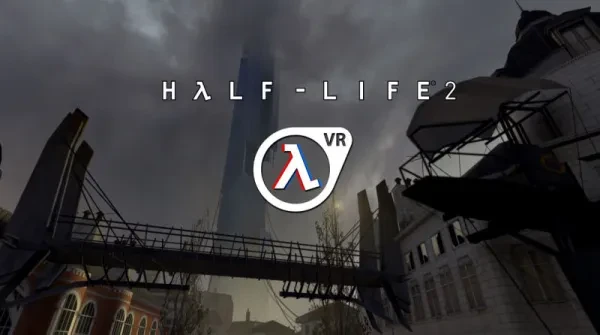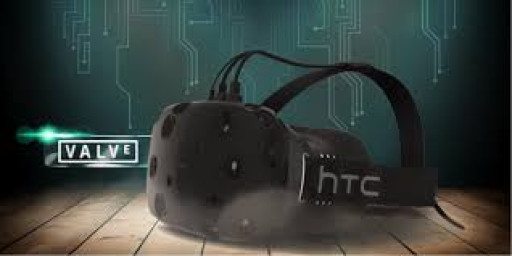
Valve's Work with VR is Changing the World
Valve, the parent company of the mega-popular Steam platform, was experimenting with VR years before it’s partnership with HTC began. Their early work involved a simple head-mounted display and AprilTags (big QR codes) for positional tracking. After solving for positional tracking, they began working on displays. They quickly figured out that VR requires a low-persistence display to prevent ghosting and blurry images. They designed custom display controllers to generate high frame-rate, low-persistent images to their AMOLED displays. All of this work paid off. They figured out that room-scale VR was going to be more realistic than sitting VR and positional tracking was the key.
1: Valve’s Partnership with HTC

Valve + HTC = Shut up and take my money!
Even though Valve did a lot of research and had several revelations, they didn’t have the capacity to mass-produce hardware for consumer VR. They needed a partner who shared their vision for what VR should be. HTC watched as their competitor in the mobile phone arena, Samsung, started putting smartphones in shells that turned them into head-mounted displays. They quickly discounted that and instead decided to go for the high end of VR. Valve, on the other hand, was working with Oculus to advance PC VR but that partnership ended. We aren’t privy to the exact reasons why they stopped working together, but their diverging visions of VR could have played a role. Oculus was initially developing sit-down VR and wasn’t focusing on positional tracking, while Valve’s research and beliefs were in room-scale setups. It was almost too perfect, a hardware company and a software company came together to jointly develop the VIVE. Valve’s contribution in the area of positional tracking, later using laser systems, became essential to the near-flawless tracking the VIVE currently enjoys. SteamVR Tracking was born.
They didn’t stop there. The VIVE Pro, slated for release next month, will feature next generation SteamVR Tracking 2.0 with upgraded base stations coming later in the year. The high-grade tracking will expand to cover an area the size of a warehouse that will enable entrepreneurs to build a new generation of VR arcades. With a play area that large, entire teams can play at once in the same space. It’s easy to envision these arcades to exist in cities all across America much like old-school arcades did for quite a while.
2: SteamVR Software Platform

Content is king and SteamVR is the largest kingdom
It’s not enough to have great hardware, content is king. Valve had spent over a decade developing their Steam platform. First unveiled in 2002, it started as a simple digital distribution hub that mainly delivered software patches. In 2005, they made their first deals with third-party game companies for distribution on their platform. Steam was buggy, but it grew and improved over time. Features like cloud saving and social networking helped it grow and amass a loyal fan base. Steam gained users by supporting Mac and Linux systems. All of this work paid off when the HTC VIVE was released and SteamVR went public right along with it.
SteamVR allows developers to sell or give away their VR content on an already-popular platform. Valve, a believer in platform-agnostic development, made sure that Rift users could play compatible games on Steam as well, as long as the game doesn’t require SteamVR Tracking and room-scale playing.
To provide a launch point for VR experiences, Valve also developed SteamVR Home. Gamers can customize their initial 3D world that they step into when they power on their headset. SteamVR Home has many built-in spaces to choose from, and users can upload their own creations. Avatars are also easy to create in Home, with a variety of head shapes, hand types, and eccentric props. Another fun element of home is the ability to go on quests. The idea is to locate objects within various SteamVR environments and they get automatically added to your inventory. There are clues to help you along the way. Social features are also baked into Home. Users see each other’s avatars and can chat through the VIVE’s internal microphone. Groups of friends can build environments and play with props together. These features, along with the ability to launch VR games, make SteamVR natural to use.
3: Valve is Still a Game Company at Heart

Valve has three full VR games in the works!
With all of their work helping develop VR hardware, and creating SteamVR, it is easy to forget their roots are in making fantastic games. Franchises like Portal, Half-Life, Left 4 Dead, Team Fortress, and more put Valve at or near the top when it comes to game development. This work extends to VR as well. In 2016 they released The Lab, a collection of VR mini-games that demonstrated the power of room-scale VR. They made a promise as well, one that is still in the works. They told the gaming world they are developing three full VR games. In December of 2017 HTC confirmed that Valve is still committed to that promise. Nobody is sure what those games will be, but it is very exciting to speculate!
